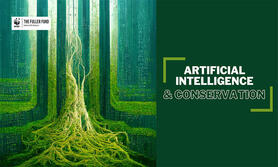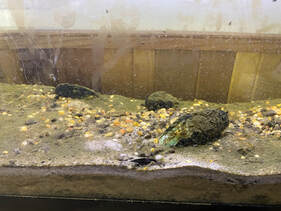CONSERVATION CORNER
A weekly blog for all things conservation
 Artificial Intelligence working with AI Artificial Intelligence working with AI Patrick Cullen, BCCD, District Engineer I tried something different and submitted a prompt to AI (Artificial Intelligence, for us old people who don’t keep up with the latest in technology (Kevin Brown)) to write an article on how it can be utilized in Conservation Efforts. The following is the response. Important disclaimer: This content was generated by artificial intelligence. It may contain errors or inaccuracies and should not be relied upon as a substitute for professional advice. AI: Hello human, I am a GPT powered AI chat bot. Ask me anything! You: Write a 400-word article on how AI can help with conservation efforts.
0 Comments
 Tourists visit Rome's Colosseum in June 2019. EyesWideOpen/Getty Images Tourists visit Rome's Colosseum in June 2019. EyesWideOpen/Getty Images Patrick Cullen, BCCD, District Engineer Let’s talk about Rome. (Pull this one out at parties to impress your family and friends!) Roman concrete is world renowned for its strength and durability. People are often perplexed why the Romans could’ve built such durable structures that have last 2,000yrs and we can only get a fraction of that. Scientist have spent decades trying to recreate the Romans’ formula for their concrete. And so far, they have identified some key factors.  Cole Sutton, Mansfield University Student, BCCD Intern What are mussels? Freshwater bivalves, commonly known as mussels, belong to the order Unionoida and are found on every continent except Antarctica. Bivalve means having two sides or shells. They inhabit lakes, ponds, creeks, and rivers. Mussels’ main food source is algae. They obtain algae by filtering or straining the water; Along with filtering out food they also filter out heavy metals and dirt particles in the water. Nonedible particles are deposited into the ground rendering clearer water. There are approximately 50 species of mussels that reside in Pennsylvania. However, 12 species have already been extirpated, which means that they are no longer found in the state.  Durability and Sustainability: Portland Limestone Cement Helps Rebuild New St. Pete Pier Source: https://www.greenercement.com/stpetepier Durability and Sustainability: Portland Limestone Cement Helps Rebuild New St. Pete Pier Source: https://www.greenercement.com/stpetepier Patrick Cullen, BCCD, District Engineer I had pleasure to be able to sit in a statewide meeting for Conservation Engineers where we talked about several topics, one of them being a new type of concrete being seen throughout the state and country. Below are some summarizations of the meeting and the topic itself, as far my knowledge takes me. In the past year there has been a big change in the concrete world here in the US. The concrete has changed from a Portland Cement Formula to a new formula, Portland Limestone Cement Formula (it is called a “green” concrete and “sustainable” concrete.) It has been a long time coming. In Europe and Canada, they have been using this concrete for years. So what changed? |
AuthorsVarious staff at the Bradford County Conservation District Archives
July 2024
Categories
All
|
|
Bradford County Conservation District
Stoll Natural Resource Center 200 Lake Road, Suite E | Towanda PA 18848 Phone: (570)-485-3144 |
